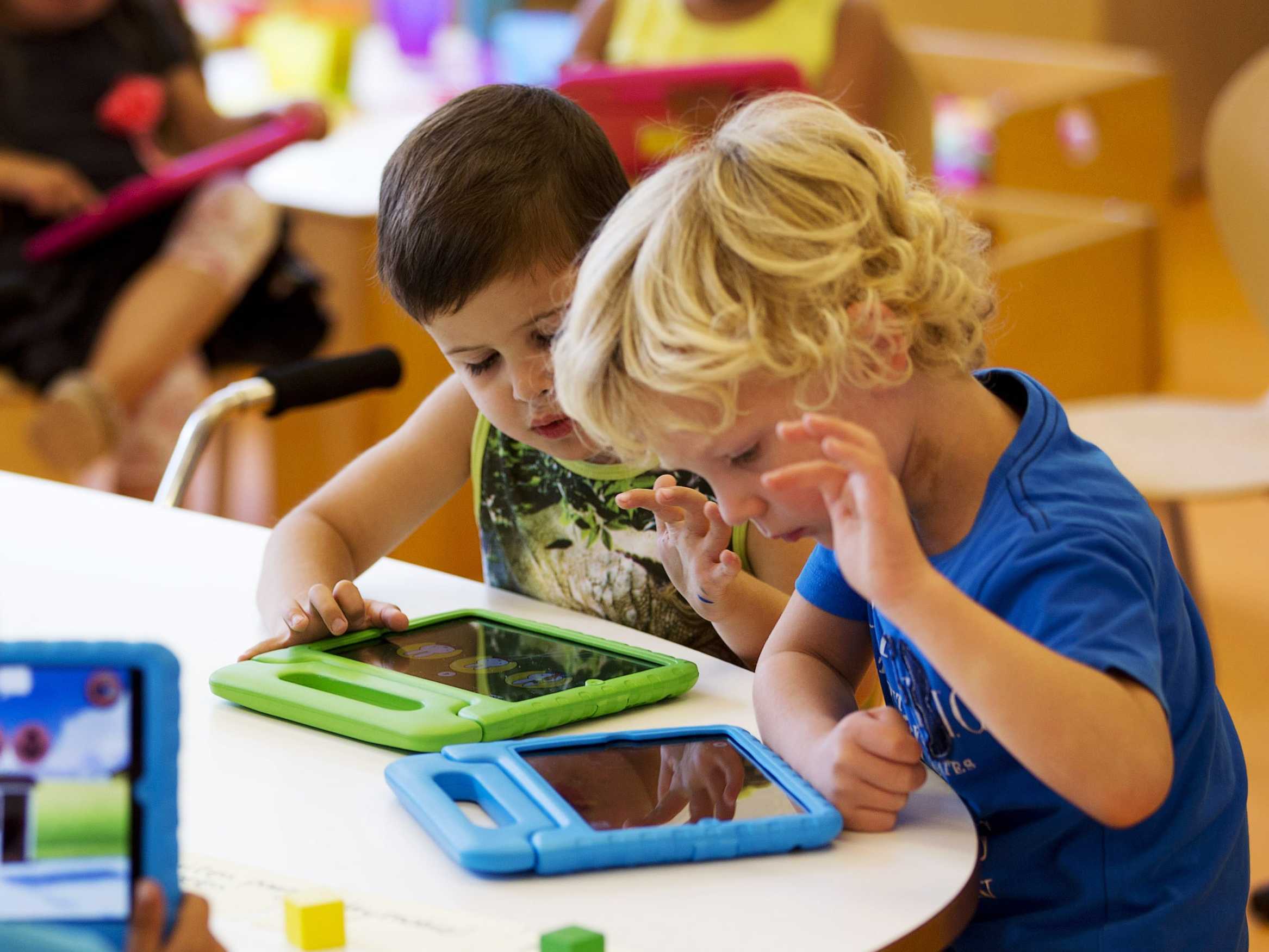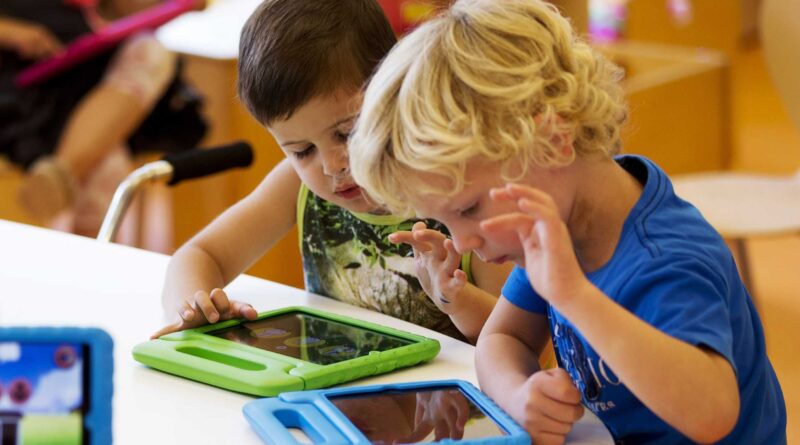How Technology is Revolutionizing Learning for Young Children

In recent decades, technology has become an integral part of daily life, and its influence on education has been profound. For young children, technology is not just a tool for entertainment but a powerful aid that can enhance cognitive, social, and emotional development. Learning in early childhood, traditionally associated with toys, books, and hands-on activities, is being revolutionized by digital platforms, mobile applications, and interactive devices. This transformation has introduced innovative ways to teach children fundamental skills while simultaneously providing new opportunities for personalized learning.
The Shift from Traditional to Technological Learning
Historically, early childhood education has been centered around face-to-face interaction, sensory exploration, and hands-on learning activities. Classroom instruction often involved physical tools like flashcards, books, puzzles, and tangible learning materials. While these approaches still have great value, integrating technology into early childhood education is allowing for a more dynamic and adaptable learning experience.
The emergence of touchscreen devices, educational apps, and e-learning platforms has shifted the landscape. With a tablet or smartphone, children can access content that not only teaches but also engages them on a deeper level. Animated characters, interactive games, and immersive videos captivate attention, making learning more enjoyable. These tools go beyond rote memorization and foster critical thinking, creativity, and problem-solving skills from an early age.
Enhancing Cognitive Development through Educational Apps and Games
One of the primary benefits of technology in early childhood education is its potential to enhance cognitive development. Educational apps and games designed for young learners are tailored to stimulate brain development in a fun and engaging manner. These digital tools focus on various cognitive skills, such as memory, reasoning, language development, and early math skills.
For instance, apps like “Endless Alphabet” and “ABCmouse” use bright visuals and interactive features to teach letter recognition, phonics, and vocabulary, allowing children to learn at their own pace. These platforms also provide instant feedback, which helps reinforce learning and enables children to correct mistakes quickly. This type of interactive learning aids memory retention and encourages children to actively participate in the learning process.
Games that focus on problem-solving, like puzzles or strategy-based activities, improve cognitive flexibility and executive functioning. These skills are essential for higher-order thinking, enabling children to adapt to new information, organize thoughts, and make decisions. Even simple games that involve counting, sorting, or matching help children develop foundational math and logic skills, setting the stage for more complex learning in the future.
Personalized Learning and Adaptive Technologies
One of the most exciting aspects of technology in education is its ability to personalize learning. Every child learns differently, and traditional classroom settings may not always accommodate each child’s unique pace and style of learning. This is where technology steps in. Many educational platforms now offer adaptive learning technologies that adjust to a child’s individual needs, providing customized experiences based on their progress and performance.
Adaptive learning tools assess a child’s strengths and weaknesses in real-time, adjusting the difficulty level and type of activities accordingly. If a child is struggling with a particular concept, the software can offer additional support, such as easier exercises or helpful hints. On the other hand, if a child masters a concept quickly, the software can present more challenging tasks to maintain engagement and promote continued learning.
This level of personalization ensures that children are neither overwhelmed nor under-challenged, which can often happen in a one-size-fits-all educational approach. It also enables teachers and parents to track a child’s progress more accurately and identify areas where they may need extra support.
Developing Digital Literacy at an Early Age
In today’s digital age, digital literacy is becoming just as important as traditional literacy. From an early age, children are exposed to digital devices, and learning how to navigate them responsibly and effectively is crucial for their future success. Integrating technology into early education helps children develop essential digital literacy skills, such as navigating apps, using search engines, and understanding basic coding principles.
Coding for kids, for example, has gained significant popularity in recent years. Platforms like “ScratchJr” introduce young learners to basic coding concepts through interactive games and animations. These tools allow children to experiment with logic, cause and effect, and sequencing, which are foundational skills for more advanced coding and computational thinking later on.
By familiarizing children with technology early, we are preparing them for a future where digital competence will be essential in virtually every career. Teaching children how to use technology safely and responsibly also helps them understand the importance of balance between screen time and other activities.
Social and Emotional Learning through Interactive Platforms
While there is often concern that technology might isolate young children or limit their social interactions, many digital tools focus specifically on enhancing social and emotional development. Interactive platforms that involve role-playing, storytelling, or collaborative games can help children develop empathy, teamwork, and communication skills.
For instance, virtual games like “Toca Life” allow children to explore social scenarios and role-play different situations. Through these experiences, children practice communication, cooperation, and problem-solving in a safe and controlled environment. Other platforms, such as “Sesame Street’s Breathe, Think, Do” app, are designed to help children manage emotions, teaching them coping strategies for dealing with frustration, anger, or anxiety.
Technology can also connect children with peers from diverse backgrounds, fostering inclusivity and cultural awareness. Through virtual classrooms or international pen-pal programs, children can interact with others from different parts of the world, broadening their understanding of different cultures and perspectives.
Bridging the Gap between Home and School Learning
Technology has also made it easier for parents to play an active role in their child’s education. Learning no longer has to be confined to the classroom; with mobile apps and online platforms, parents can support their child’s learning at home in ways that complement their school curriculum. Apps like “Khan Academy Kids” and “Starfall” provide access to a wide range of educational resources that parents can use to reinforce learning or introduce new concepts.
Moreover, many apps now offer parental tracking features that allow parents to monitor their child’s progress. This transparency fosters a collaborative approach to learning, where parents and teachers can work together to ensure that a child is meeting developmental milestones and addressing any areas of concern.
The accessibility of these tools also means that children in remote or underserved areas can access high-quality educational content that they may not have been able to before. In areas where schools may be under-resourced, technology acts as an equalizer, providing children with learning opportunities that transcend geographic limitations.
Challenges and Considerations
While the benefits of technology in early childhood education are numerous, there are also important considerations and challenges. The main concern is the risk of excessive screen time. Studies have shown that too much screen time can negatively affect a child’s attention span, sleep patterns, and physical health. Therefore, it is crucial to strike a balance between digital and non-digital activities, ensuring that technology supplements rather than replaces traditional learning methods.
Another challenge is the need for teacher and parent training. For technology to be effective, educators and caregivers must be equipped to use these tools correctly. This involves understanding not only how the technology works but also how to integrate it meaningfully into the curriculum and daily routines.
Moreover, there is the issue of access. Not all families or schools have equal access to the latest technology, and this digital divide can exacerbate educational inequalities. Ensuring that all children have access to high-quality digital learning resources, regardless of their socioeconomic status, is an important goal for policymakers and educators moving forward.
Conclusion: The Future of Learning
Technology is revolutionizing learning for young children by making education more interactive, personalized, and engaging. It provides opportunities for cognitive, social, and emotional development that were previously unimaginable. However, to fully harness the benefits of technology, it is essential to use it in moderation and in combination with traditional learning methods.
As technology continues to evolve, it will play an increasingly important role in early childhood education. By fostering digital literacy, enhancing cognitive skills, and encouraging social-emotional learning, technology is preparing today’s children for the challenges and opportunities of tomorrow. The key to success lies in using these tools wisely, ensuring they are a complement to—and not a substitute for—human interaction, hands-on learning, and personal exploration.

